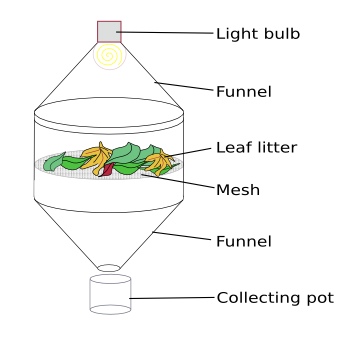Subclass: Apterygota
Introduction
Apterygota (wingless insects) hatch from their eggs in a form very similar to the adult, and just grow from being mini versions of the adults to the real thing. This type of development is called ametaboly or incomplete metamorphosis.
These are very small insects - smaller than 2cm - so you will need a hand lens or magnifier to see them properly. They are mostly found in soil and damp places, such as under leaves. There are hundreds of thousands of them in an acre of garden.
They are a good example of how the small size of an insect can enable them to hide in an environment where they can survive easily (though they do have mite predators). However, because they are small they will dry out if exposed to heat, and this knowledge helps us to capture them to study.
Finding apterygotes
Although these tiny insects can be found by diligent searching of soil and leaf litter spread over a white sheet of paper, there are ways of enticing them into the open. One way to collect some is by means of a tullgren funnel.
Tullgren funnel

This is an ordinary funnel into which you place a handful of soil or leaf litter (often this leaf litter is supported by a layer of mesh). The funnel is placed above a jam jar or other collecting vessel with slippery sides and with a piece of slightly moist tissue paper placed at the bottom of the jar.
This can be brought inside and a lamp shone onto it from above. Over a period of a few hours the insects, mites and other invertebrates present gradually work their way down, moving away from the source of light and heat, and fall into the jar.
They can then be examined, sketched or photographed, and recorded. Check to make sure there aren't a lot of spiders or other predators in the jar, as they might eat the insects you are trying to study!
The apterygotan orders are:
- Archaeognatha (Order: Microcoryphia)
- Three-pronged bristletails (Order: Thysanura)
Back to Insect Orders.
![Amateur Entomologists' Society home page [Logo]](/images/aes-logo-wplant.gif)